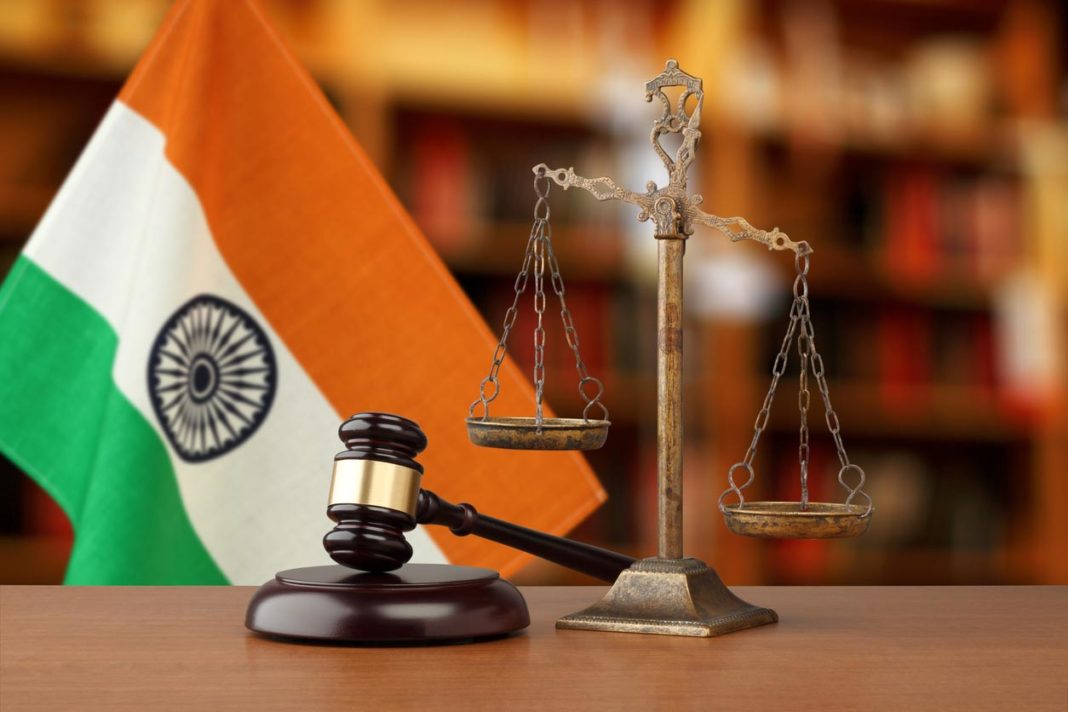In the past few years India has made global headlines, with both positive as well as negative impacts. Some of the most striking of those headlines have been the ones which exposed the present regime’s brazen attempts to silence dissent and quash criticism. More often than not, freedom of speech is attacked under the pretext of “national security”. The abysmal state of freedom of speech and expression in India today could be likened to the period of emergency. Just like the present times, during the emergency, journalists, Opposition leaders, and activists were thrown in jail under the rule of Indira Gandhi government.
The state uses various draconian laws to legitimise the frivolous arrests of those critical of the government and thus stifle dissent. One such law is the sedition law. While Opposition leaders, legal experts and activists have long criticised the British era law of sedition, it was the Supreme Court of India which recently brought the law of sedition into the spotlight and thus rejuvenated the debate around it.
Once charged under the law of sedition, the maximum punishment an individual can be subjected to is imprisonment for life and the police can arrest individuals without a warrant.
Amidst rising public denouncement of Central and State law enforcement agencies using the sedition law to silence dissent, several petitions have been filed highlighting the “chilling effect” sedition has on the fundamental right of free speech.In 2018, the Law Commission of India, in its consultation paper on sedition even noted that it is time to re-think or repeal section 124A. As many as three benches in the Supreme Court have recently underscored the need to review Section 124A (sedition) in the Indian Penal Code (IPC).
In an unprecedented judicial criticism, heading a three-judge Bench,Chief Justice of India N.V. Ramana questioned the usage of the sedition law and criticised it saying, “Sedition is a colonial law. It suppresses freedoms. It was used against Mahatma Gandhi, Tilak… Is this law necessary after 75 years of Independence?”
The Chief Justice of India categorically said that the law of sedition or Section 124A of the Indian Penal Code was prone to misuse by the government. The CJI’s statement didn’t come out of the blue as is evident by the data provided by the government with regards to the law of sedition. According to the data provided by the Union ministry of home affairs (MHA), as many as 326 cases were registered under the controversial “colonial” era sedition law from 2014 to 2019 in India. Through the past six years, cases registered under the sedition law have seen a steep rise in numbers. According to MHA’s records, the number of sedition cases registered each year from 2014 to 2019 stood at 47, 30, 35, 51, 70 and 93 respectively.
What’s more striking is the fact that out of the 326 cases registered under sedition in the past six years, only six people were convicted. The National Crime Records Bureau’s data shows that the conviction rates under the sedition charge in the period of 2016-19 fell to just 3.3 %. With such low conviction rates, its colonial origin, vague definition, draconian nature of the punishment, lack of procedural safeguards and arbitrary usage, the law of sedition acquires an archetype of a draconian law that is meant to suppress free press and voices critical of the ruling dispensation.
In the past two years, the law of sedition has been used against several citizens who have been vociferous in their criticism of the BJP government. According to the data compiled by Article14.com, much of the surge in sedition cases was witnessed after protest movements, such as those against the Citizenship Amendment Act (CAA), 2019 and the rape of a Dalit teenage girl in Hathras district of Uttar Pradesh.
The draconian nature of the sedition law and how it could result in gross violation of human rights became evident with the passing away of 84-year-old tribal rights activist Father Stan Swamy. Many called the frail Jesuit preist’s death a cold-blooded murder. Charged with sedition in the Bhima Koregaon case, Stan Swamy who suffered from Parkinson’s disease breathed his last while his lawyers sought an urgent hearing on his medical bail plea. A day after activist Stan Swamy’s death, a report from an American forensic agency claimed that incriminating evidence was planted on the computer of Surendra Gadling who was among the 16 people accused in what is known as the Bhima-Koregaon case. The report raised the possibility that StanSwamy’s computer too may have been targeted.
Father Stan Swamy is not the only victim of the draconian law, several others have been incarcerated under the sedition law. The law has been used against journalists like Siddique Kappan whose bail pleas have been denied several times and is still languishing in jail over allegedly trumped up and politically motivated charges. Sedition charges have also been slapped against civil society members for acts as frivolous as a social media post.
History of Sedition Law
In order to understand the implications of sedition law, it is pertinent to look into the genesis of the law. The idea of the law of sedition is intertwined with the agenda to stifle demands of freedom and stands in contradiction to the liberal values India claims to uphold.
Sedition laws were enacted in 17th century England when legislators believed that only positive opinions of the government should be allowed, as bad opinions were detrimental to the monarchy.
Several legal experts have time and again stated that the sedition law was the brainchild of the British colonial rule which used it to suppress critical voices emanating from the Indian freedom movement. The Indian Penal Code came into force in 1860 but lacked the section concerning sedition. Section 124A of the Indian Penal Code, as we have today, was introduced a decade later in 1870.
During the British era, a number of stalwarts of the freedom movement figured in the list of accused in cases of sedition. The first freedom fighter to be charged with sedition was Bal Gangadhar Tilak. The British government alleged that Tilak’s articles carried in his Marathi newspaper would encourage people to foil the government’s efforts at curbing the plague epidemic in India. The sedition law also used against Mahatma Gandhi, Bhagat Singh and Jawaharlal Nehru.
It is important to note that the United Kingdom itself repealed the law in Britain only in 2009. Several other countries, including New Zealand, Indonesia, Australia and the US, that identify as thriving modern societies have either junked the sedition law or have amended it to reflect the idea of freedom of expression.
Thus, the answer to whether the law of sedition should still hold validity in democratic countries becomes quite telling when one acknowledges the origin of the law.
Also Read:




















If Chief Justice Of India really wants to see the misuse of Sedition Laws & it’s lookalikes UAPA etc that hve conviction rates of even less than 1% then he Shld look at this report of Telegraph.
Nation’s don’t run on State terror like this where Judiciary is a mute spectator despite seeing & knowing everything.. https://www.telegraph.co.uk/global-health/terror-and-security/detainees-held-without-charge-kashmir-accuse-police-widespread/